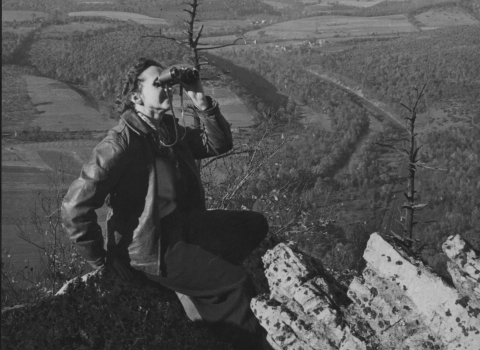In September 2019, the U.S. Fish and Wildlife Service Caribbean Ecological Services Field Office (CESFO) completed a restoration project at the Jobos Bay National Estuarine Research Reserve in southern Puerto Rico. Portions of the reserve had been used as a clandestine landfill in the past.
The Service’s CESFO Coastal Program worked on the project in collaboration with a local NGO, Protectores de Cuencas, Inc. (PDC); the National Oceanic and Atmospheric Administration; and the Puerto Rico Department of Natural and Environmental Resources (PRDNER).
The reserve includes mangrove islands, seagrass beds, upland dry forests, lagoons and Mar Negro, a mangrove-wetland forest complex with unique ecological values and natural scenery. The PRDNER manages the area, which is one of 29 areas in the National Estuarine Research Reserve System (NERRS) that is protected for research, water quality monitoring, education, and coastal stewardship. The NERRS is a network of coastal areas designated to protect and study estuarine systems. In addition, the reserve protects 2,883 acres along the Puerto Rico’s southern coast, providing an ecologically diverse ecosystem for a series of important trust species such as hawksbill sea turtles, peregrine falcons, yellow-shouldered blackbirds, and Antillean manatees.
“The site is already being used as an education station and already has been integrated in our K-12 school field trips visits for water quality education program,” said Ernesto Olivares, Outreach Coordinator at the reserve.
The project aimed to re-establish hydrological connectivity at the reserve by removing illegal waste and creating a canal to allow intertidal flow. Once the waste was removed by PDC, the soil was regraded to reach the desired topography allowing the hydrological connectivity with Jobos Bay.
“Successful long-term outcomes are achieved when engineering with nature. This wetland restoration is a great example of this achievement for the benefit of important local and migratory bird species, wildlife and local community involvement and education,” said Roberto Viqueira, Executive Director of PDC.
Eight small habitat mounds were left unexcavated to help increase the biological diversity of the restored site. These mounds can provide escape areas and nesting opportunities to wildlife, plant diversity, as well as visual breaks within the wetland complex. Also, reforestation efforts with native vegetation and delimitation of critical areas were conducted in the project site. A total of 250 native trees/shrubs, including sea grape, white manjack, button mangrove and emajagüilla, were planted to boost ecological recovery and provide new habitat and forage areas for migratory birds.
“This restoration project represents a significant achievement for the coastal ecosystem by improving the functionality of the area as a nesting and feeding ground for resident and migratory birds, said Milton Muñoz, Steward Coordinator for the reserve. Those birds include the black-necked stilt, the Antillean nighthawk and the killdeer.
The project enhanced approximately 1.24 acres of mangrove-wetland forest and salt flats habitat providing better habitat for a variety of fish, crustaceans, insects, resident and migratory birds as well as other wildlife species. In addition, it will increase research, outreach and educational opportunities in the area.


